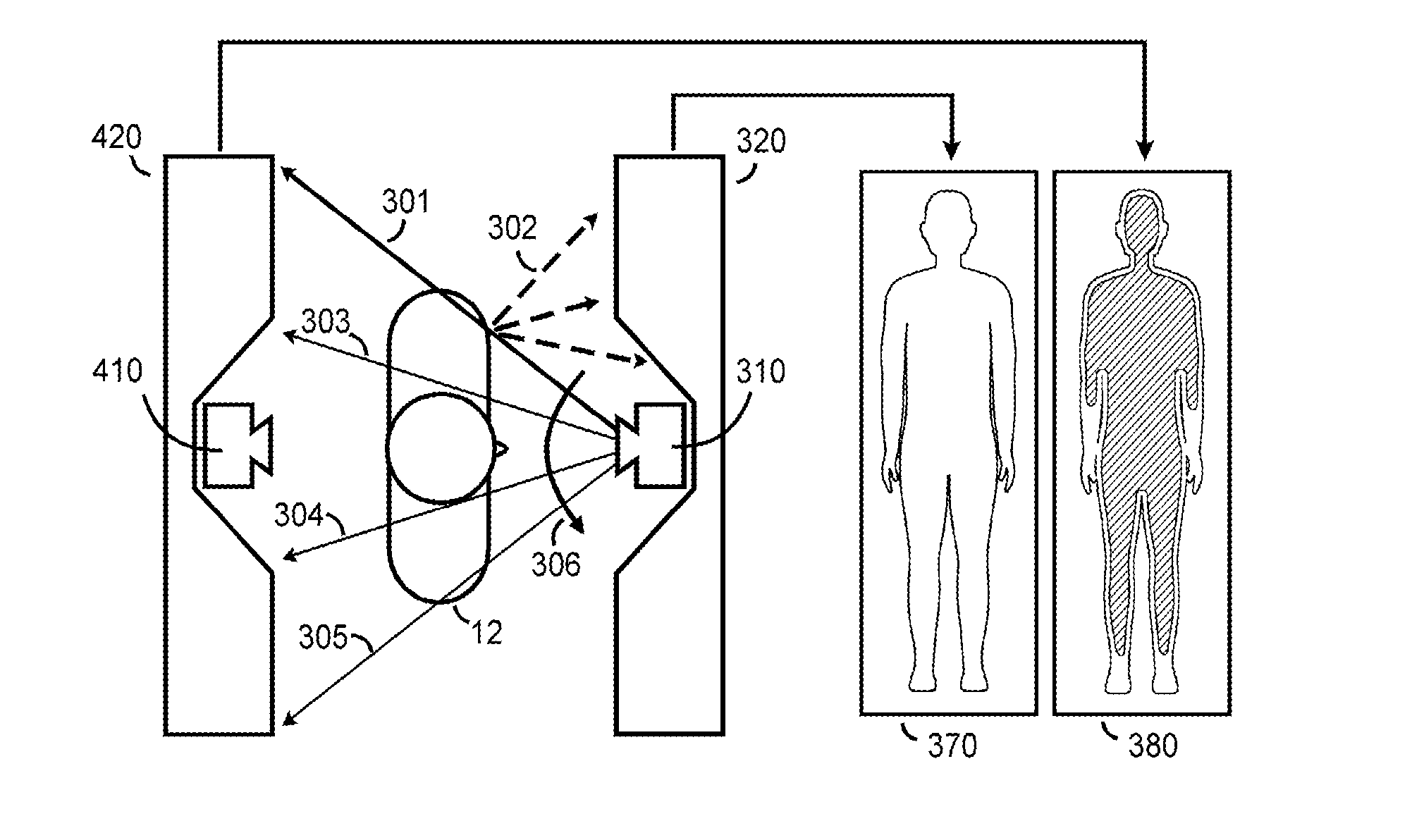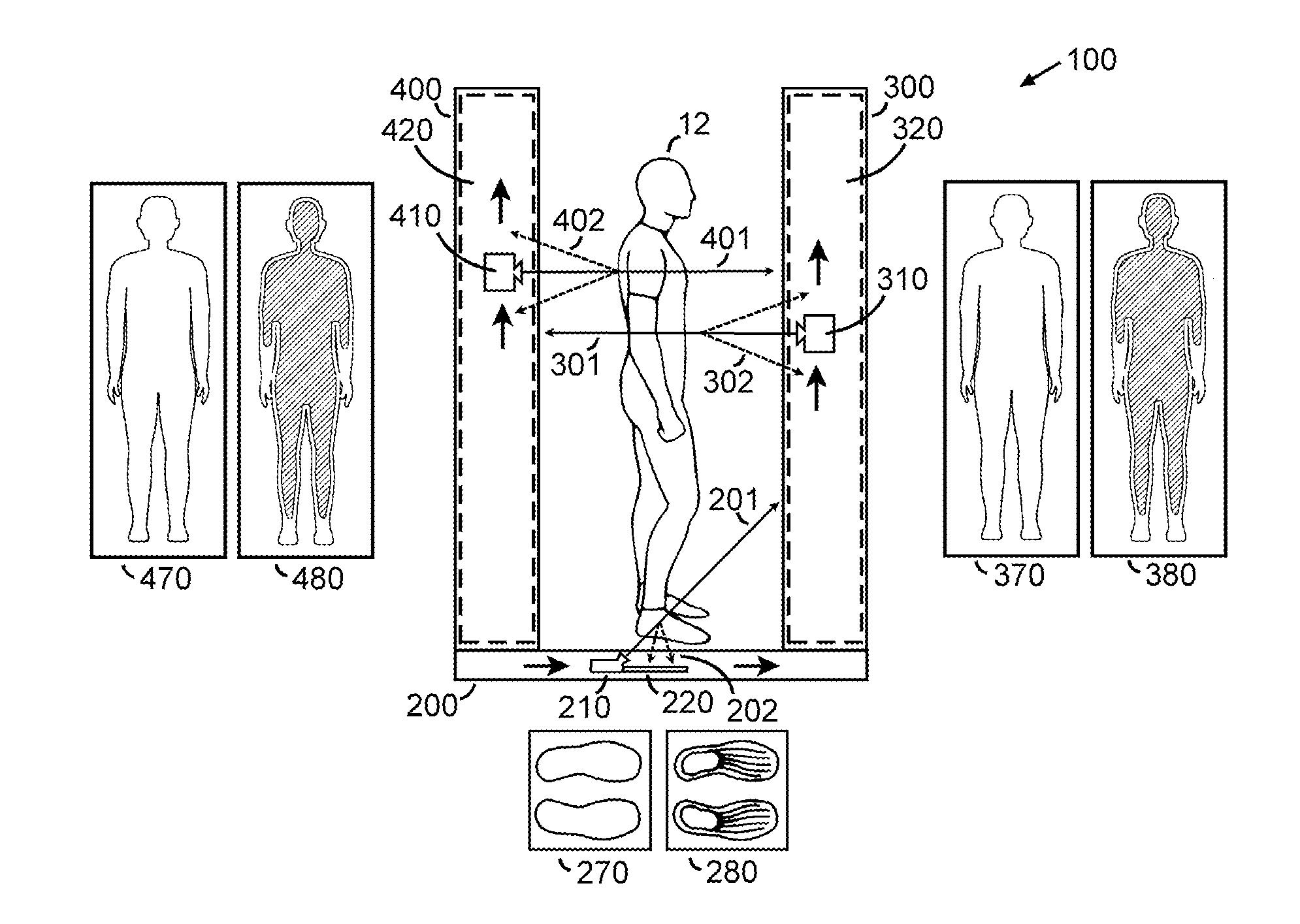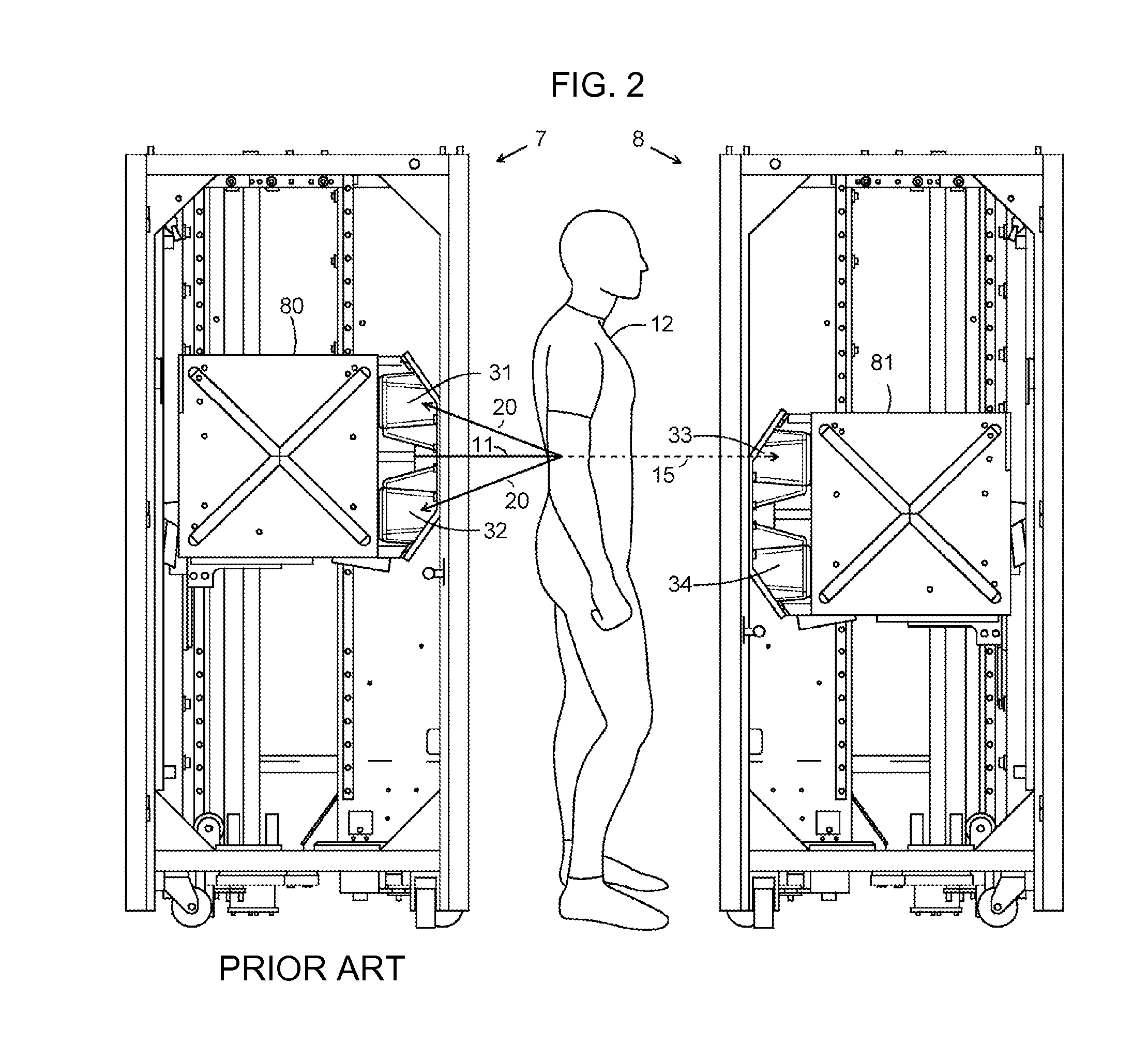Full Body
Scanners

Full body scanners are used for the screening of bodies, while x-rays are used for the screening of luggage.
︎︎︎ Related entries:
Detection Algorithm
Passport
Non-Place
Safety
Security Theater
︎ Random Entry
Tags: systems design, security,
sorting, surveillance, technology
Detection Algorithm
Passport
Non-Place
Safety
Security Theater
︎ Random Entry
Tags: systems design, security,
sorting, surveillance, technology
Design Decisions
Full body scanners, also called Advanced Imaging Technology (AIT), is a device that scans passengers to detect whether they are in possession of any objects that could pose potential threats. Starting in 2007, its use is the latest in a long line of screening strategies, including metal detectors, pat-downs, and X-ray machines [1]. A security checkpoint will often combine full body scanners for the screening of bodies, with x-ray machines for the screening of luggage. This device uses millimeter wave or backscatter imaging technology to visualize the body of the passenger and any objects that may be concealed under their clothing, without physically removing clothes or making physical contact.
Through the years, the full body scanner technology has evolved with respect to the way it visualizes the person’s body. Initial devices, especially the backscatter machines, showed an image of the person’s naked body, whereas latest millimeter wave devices show a cartoon-like representation, or otherwise obscure the face, groin, or other identifying features of the passengers. As of present day, passengers may decline full body scanner screening in favor of physical pat-downs or removal of clothing, but TSA staff may still make full body scanner screening mandatory for some passengers [2].
 X-ray
transmission imaging body scanner design
(2012).
X-ray
transmission imaging body scanner design
(2012).
Effects on Passengers
The deployment of full body scanners has spurred significant discussions about its effect on passengers’ civil liberties. As Adey writes, “A bag will not mind if it is x-rayed, CT scanned, and rummage through”, but people do mind being searched and handled [3, 4]. It is seen less physically intrusive than pat-downs, but far more visually intrusive, with some calling it a “virtual strip search” without probable cause [5]. At Dallas International Airport, TSA complaints have been reported to disproportionately stem from women who felt that they were singled out for repeated screening for the entertainment of male officers [6]. In response to a variety of privacy-related complaints and lawsuits, the full body scanner technology has changed the way it visualizes the person’s body, and various regulations have been developed regarding the recording and storing of images [7].
Some privacy advocates see full body scanners as preferable to other methods that require the creation of large databases of biometric information and surveillance footage, since full body scanners are more discrete and momentary. Full body scanners assess the capacity to do harm, whereas other methods seek to identify the intent to do harm. Those methods, such as visual profiling by staff, or camera surveillance processed by A.I. algorithms (See: Detection Algorithm), run far greater risk of engaging in racial, gender, or religious discrimination.
On the other hand, full body scanners are a very highly visible deployment of security strategies, in contrast to profiling or camera surveillance methods which are relatively invisible. Thus, full body scanners can contribute significantly to passenger anxieties surrounding being treated as potentially suspicious. Advocates have accused TSA of using methods such as full body scanners to merely contribute to security theater, arguing that the relative ease of manipulating and hacking full body scanners prove that the body scans are ineffective and mostly for show [8] (See: Security Theater)

 X-ray
Transmission Imaging body scanner using backscatter technology
(2012).
X-ray
Transmission Imaging body scanner using backscatter technology
(2012).
- Giblin, Paul, and Eric Lipton. 2007. “New Airport X-Rays Scan Bodies, Not Just Bags.” The New York Times. The New York Times, February 24, 2007.
-
Vaughan, Jill. 2015. “Privacy Impact Assessment: Update for TSA Advanced Imaging Technology.” U.S. Department of Homeland Security.
-
Adey, Peter. 2003. “Secured and Sorted Mobilities: Examples from the Airport.” Surveillance & Society 1 (4).
-
Carter, A. B. 2002. “The Architecture of Government in the Face of Terrorism.” International Security, 26 (3): 5-23.
-
Pickler, Nedra. 2011. "Group says body scanners an 'unreasonable search'". The Washington Post.
-
Allen, Ginger. 2012. "Female Passengers Say They're Targeted By TSA « CBS Dallas / Fort Worth". Dfw.cbslocal.com.
-
"EU Sets Rules for Full Body Scanners." Air Transport World 49.1 (2012): 18.
- Schneier, Bruce. “Is Aviation Security Mostly for Show?” CNN. Cable News Network, December 29, 2009.